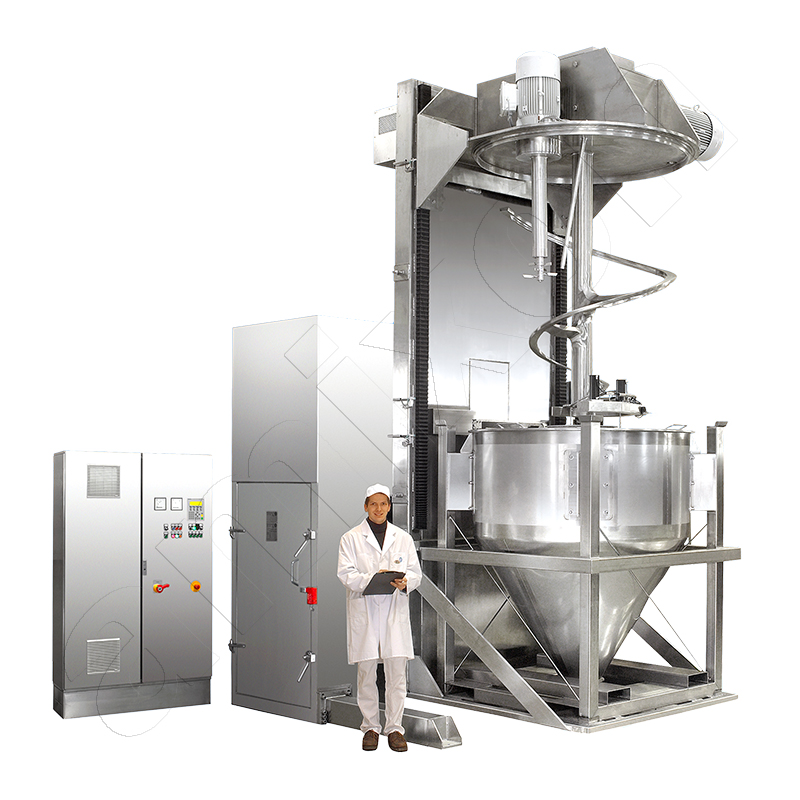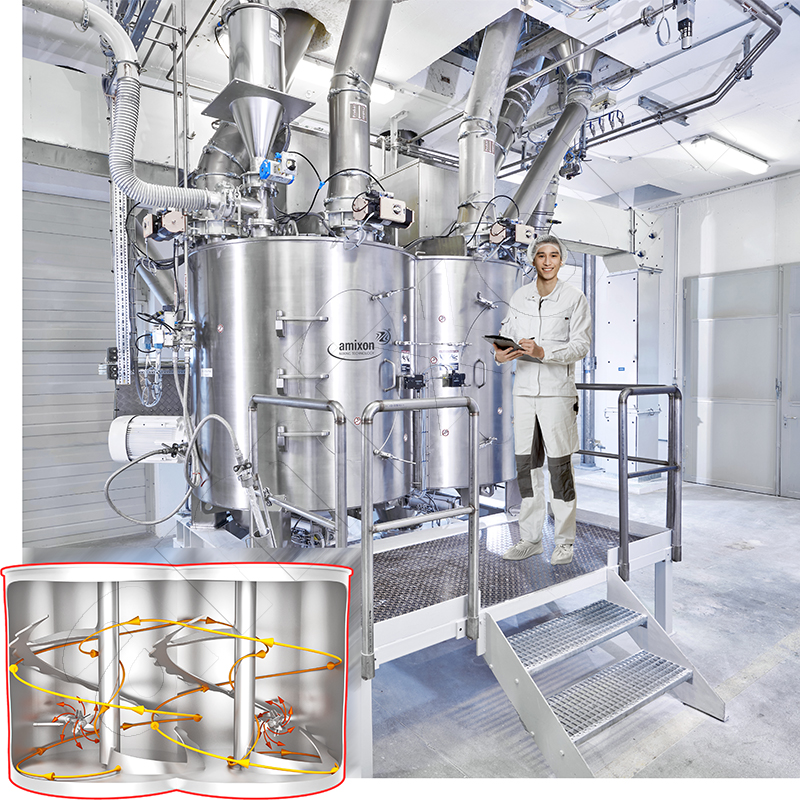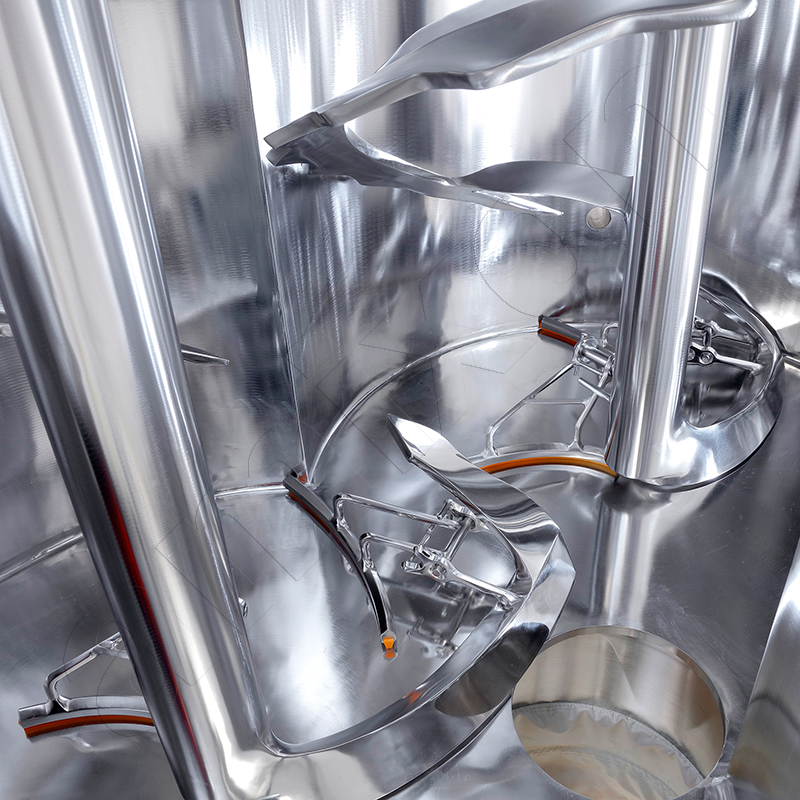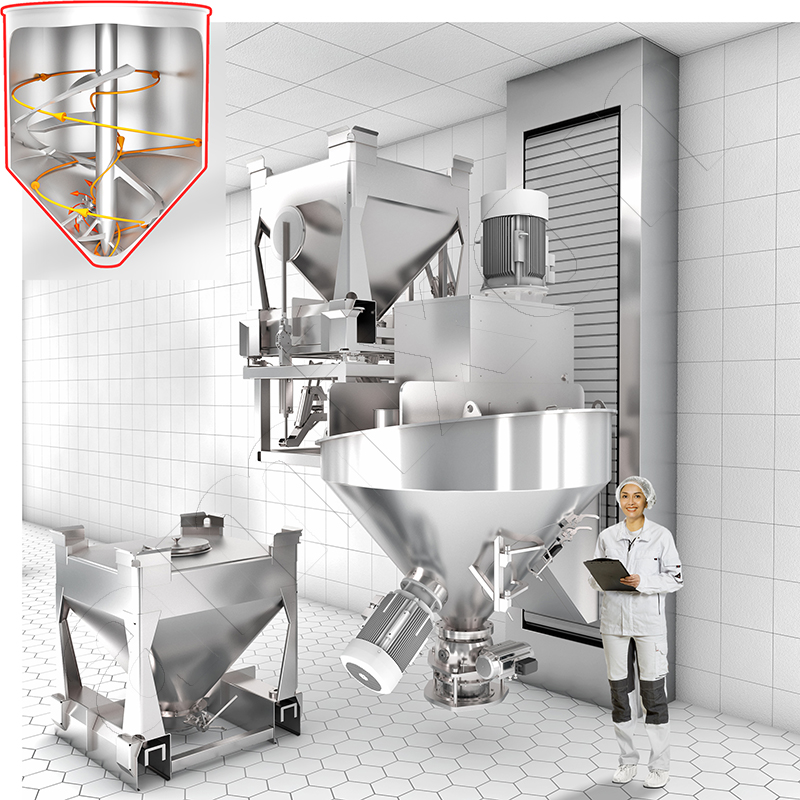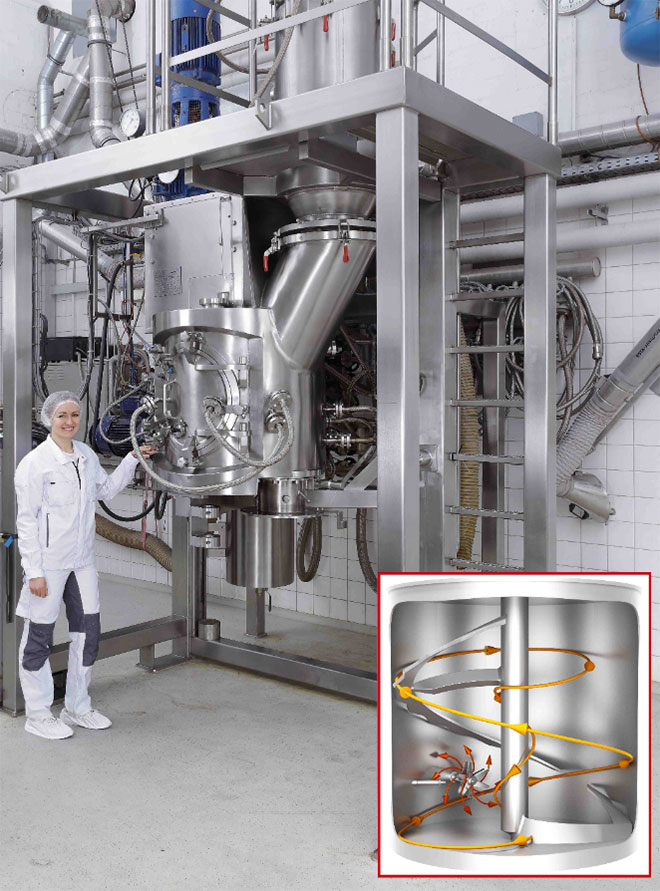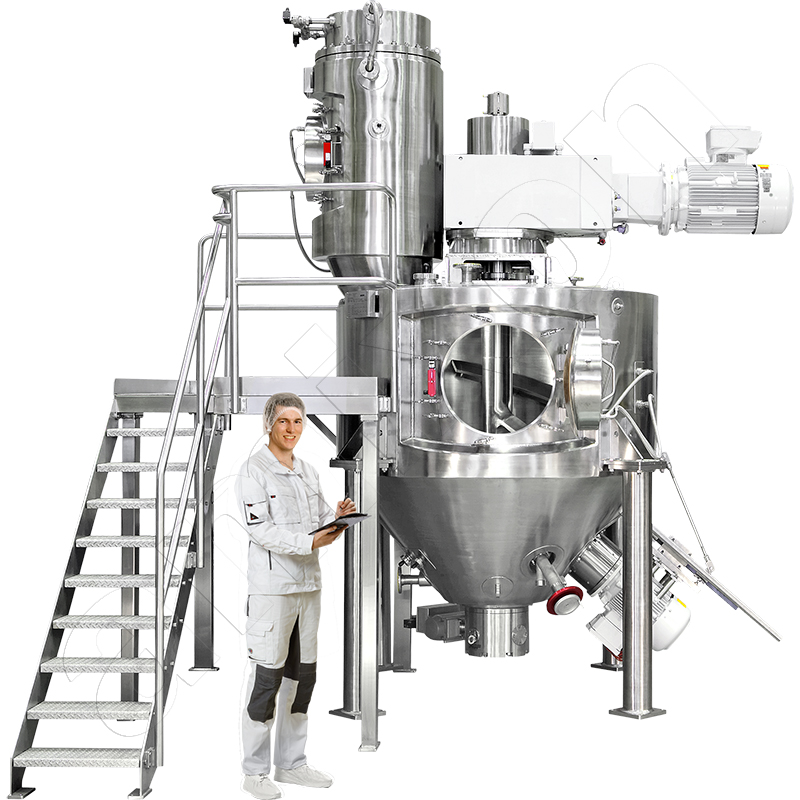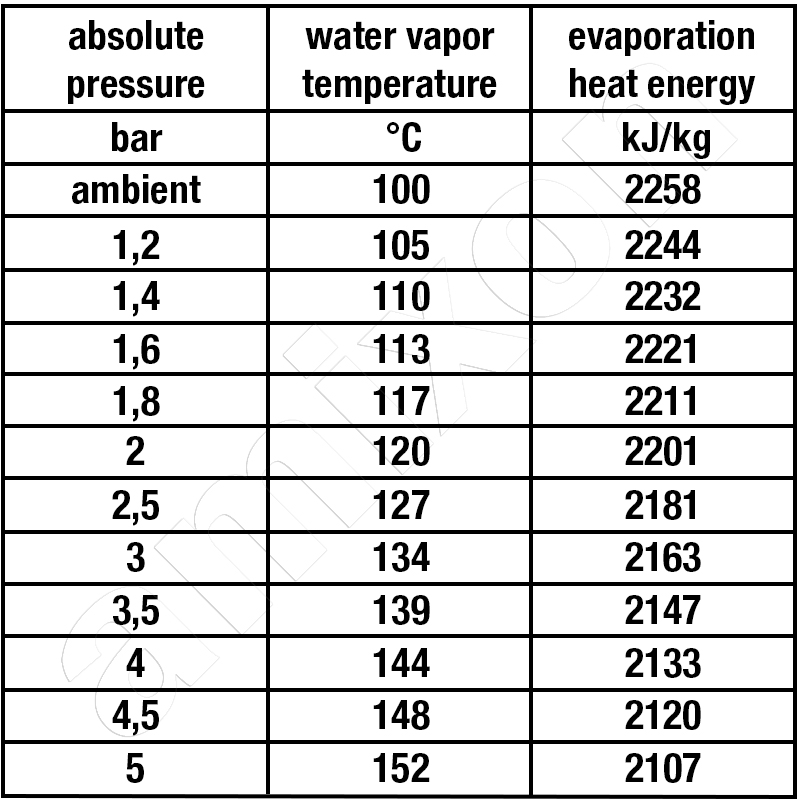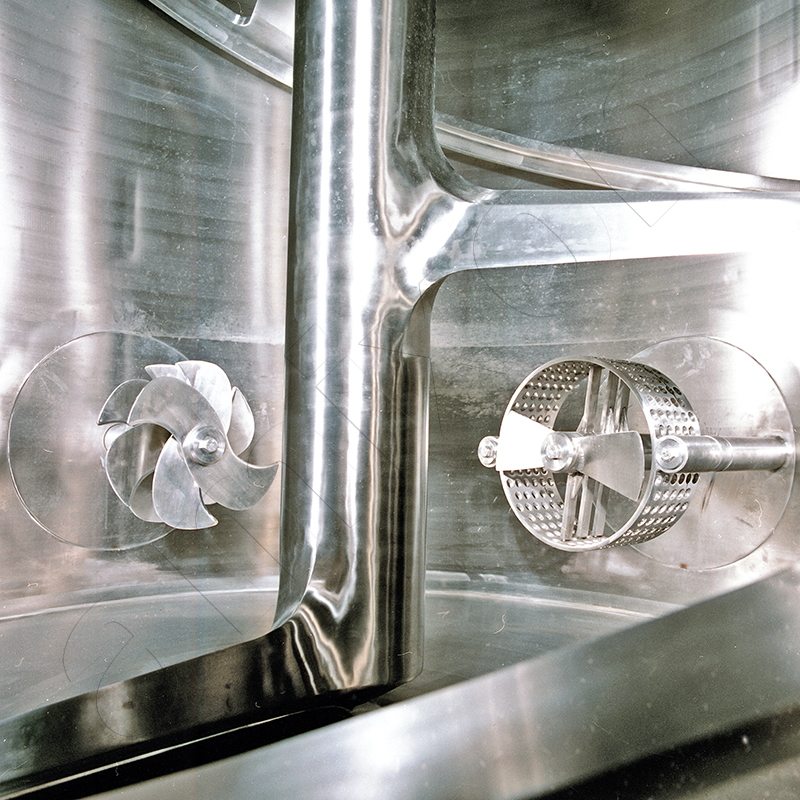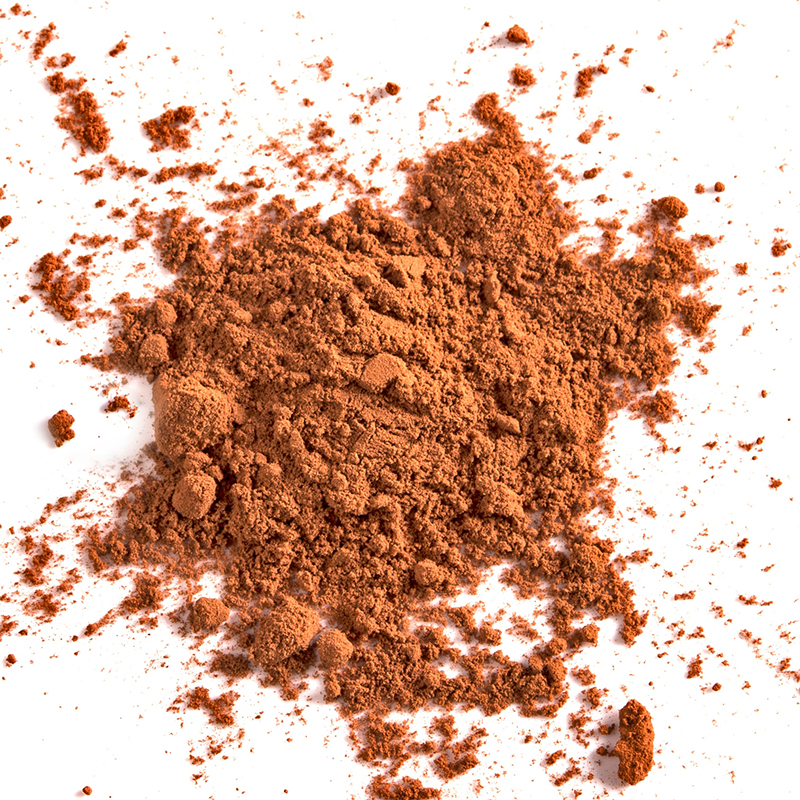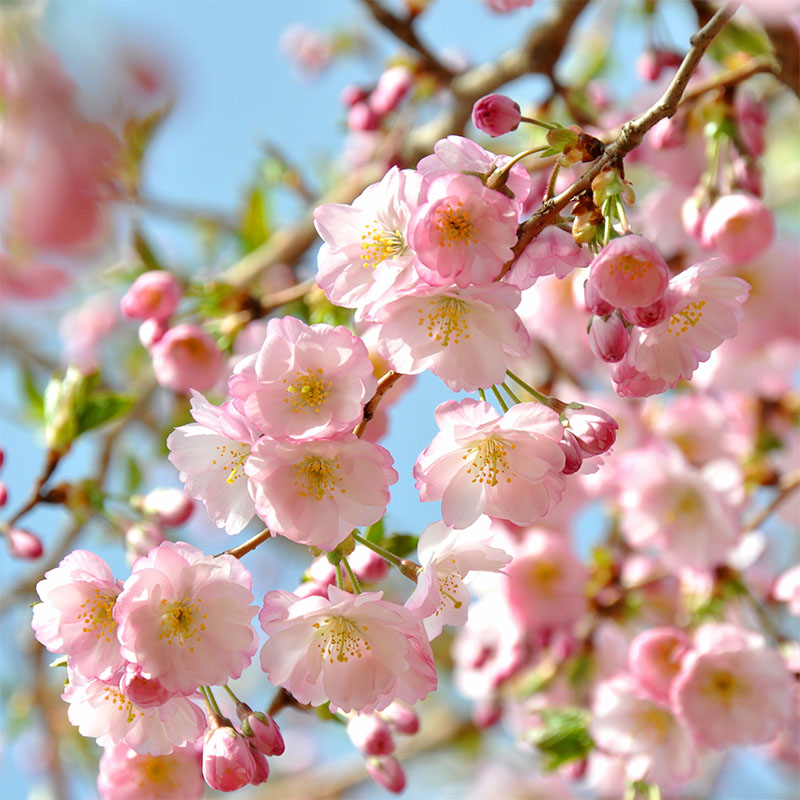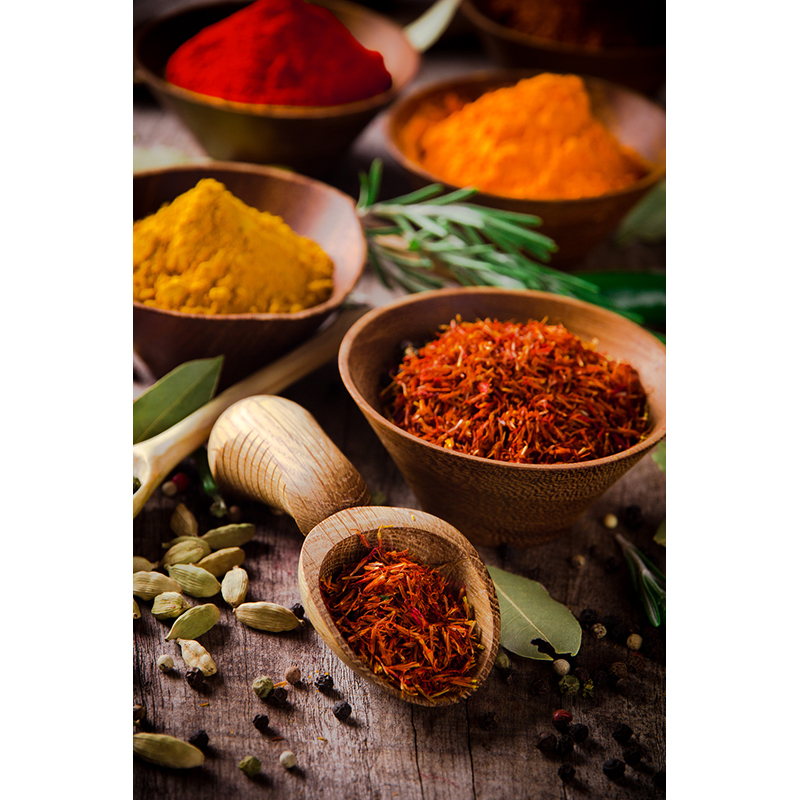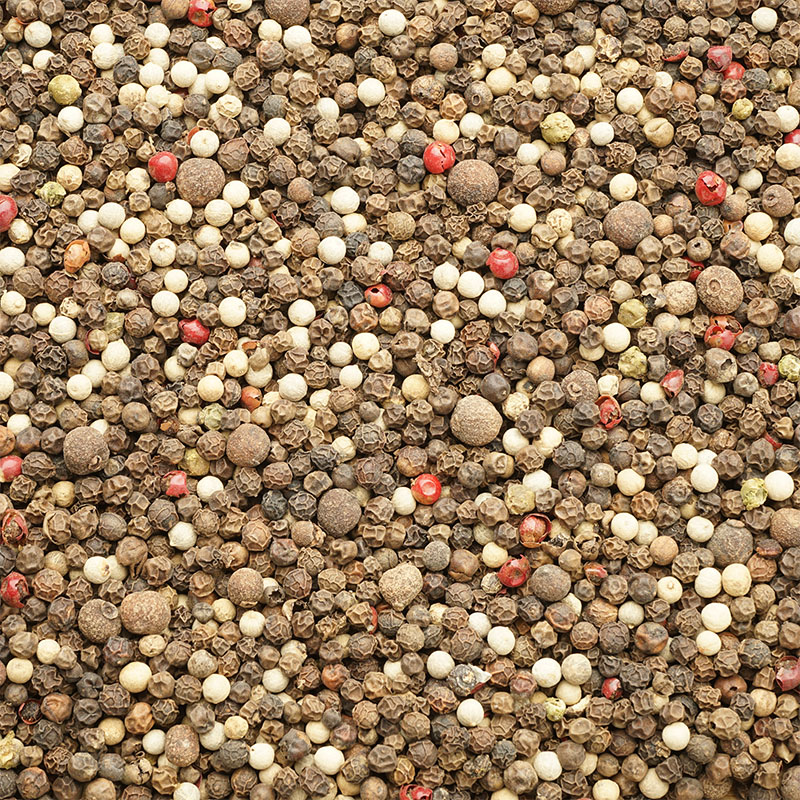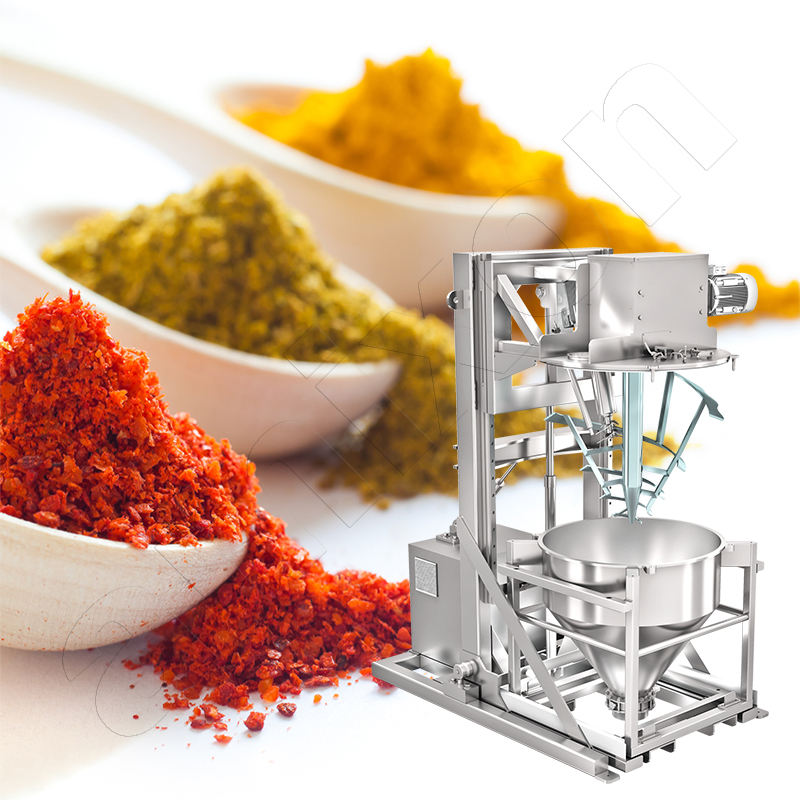
Our solutions for the spice industry
Historical information about the spice trade
The spice trade was and is a lucrative business. Even in the late Middle Ages, exotic spices were considered a status symbol in Europe. In the 16th century, Venetian merchants in particular dominated the spice trade with India and thus amassed great wealth. In the early modern period, precious metals and spices were the rewards for the discoverers of foreign continents. This is how spices such as paprika, allspice, vanilla, pepper, cloves, cinnamon and nutmeg came to Europe.
Today, spice cultivation is globalised. Many new growing areas in the tropics and subtropics have been developed. By far the largest market is the USA, followed by Europe, China and the Middle East.
In 2024, the global market for herbs, spices and spice blends is expected to be worth around 30 billion euros. Experts assume an annual growth in sales of around 9 per cent. A market volume of 59 billion euros is expected by 2032. There are three main reasons for this rapid growth: 1) the growth of the world population; 2) the fact that many people's lifestyles are increasingly geared towards health-promoting natural spices; 3) electronic trading platforms are promoting global availability.
The value of the spices increases massively with each industrial processing step. In this respect, the producing countries also have a growing interest in refining the spices in their own country. Machine manufacturers from Germany supply high-quality equipment for this.
The main advantages of amixon® machines at a glance
- amixon® spice mixers are world leaders when it comes to mixing quality and hygiene.
- amixon® mixers can mix dry and moist powders quickly and precisely. No (measurable) heat is generated in the mixture during the mixing process.
- amixon® mixers can disperse a wide variety of liquid substances (oils, lecithins, spice extracts, oleoresins, water-based extracts, etc.) into powders extremely quickly and precisely.
- amixon® mixers are able to empty themselves completely after the mixing process.
- amixon® mixers have large, hygienically designed inspection doors. This makes it easier to see into the mixing chamber and to access it.
- amixon® mixers are quick and easy to clean: dry, damp or wet.
- The mixing chamber is encapsulated in a gas-tight and completely dust-free manner. No dust can escape.
- The entire mixing plant should be dust-free.
- Personal hygiene is of great importance. This includes, for example, training, suitable protective clothing, hand disinfection, etc.
- The raw materials are subjected to an incoming goods inspection before acceptance.
- The entire spice factory is monitored seamlessly, and all processes are recorded and documented. - Seamless traceability.
Sterilisation is health protection
Spice sterilisation and disinfestation is health protection. The sterilisation methods include(d):
- Gassing with ethylene oxide, ozone or carbon dioxide
- Heating for example with steam, microwaves
- Exposure to ionising radiation
Criteria for the selection of suitable finishing methods are always the sensitivity of the spice and its components, the required reduction of the microbial count and the subsequent use. Some of these methods are subject to labelling, for example radiation treatment. Others did not get beyond the test stage and some others are banned in the EU. Table 6 provides an overview.
The large number of methods shows that the sterilisation of spices is complicated. The aim of killing off micro-organisms conflicts with the requirement to protect substances in the spices such as essential oils, vitamins and flavours.
| Process | Auxiliary material | Advantages | Disadvantages | Remarks |
| Gassing | Carbon dioxide (CO2) | + permitted under food law aspects + suitable for disinfestation (insects that damage stocks) | - for sterilisation, the application under pressure (40 bar) is not adequate. Effective sterilisation is only expected under high pressure. | |
| Heating | Steam | + safe in terms of food law + highest heating and hence affects the product surface | - Trade-off between product preservation and sterilisation result to be achieved | Suitable for whole and ground spices as well as herbs |
| Heating | Microwaves | + safe in terms of food law | - Success dependent on water content - The effect is weakest on the product surface (can be improved by wetting) - High thermal stress to the product and hence sensory impairment of the quality. | Not suitable for products with a water content below 5 %. Has not proved very effective in practice. |
| Heating | Infrared light | + safe in terms of food law | ||
| Radiation | Gamma rays / X-rays / electron rays | - subject to labelling | Not for organic spices. |
Sustainable spice trade
When importing spices, all aspects related to sustainability are becoming increasingly important. Not only environmental protection in cultivation plays a role here, but also the requirements of the German Supply Chain Act.
‘The Codex Alimentarius is a collection of international food standards presented in a uniform manner. It is based on the assumptions and resolutions of the so-called Codex Alimentarius Commission, a joint body of the Food and Agriculture Organization (FAO) and the World Health Organization (WHO) of the United Nations.’
Founded in 1963, the Codex Alimentarius (CA) is supported by around 190 members worldwide. The EU also joined the CA in 2003, so its regulations also apply to spices in Europe. Typical quality controls include:
- testing spices for microbiological risks
- Inspection of compliance with phytosanitary requirements
- Correct labelling – protection against deception
- Random sample inspections based on statistically determined requirements in the producing country and at the recipient's premises before further processing
- Establishment and implementation of a HACCP concept within the company
- Sanitary measures in the event of major deviations
Spices can quickly become contaminated. This also includes small organisms. To avoid this, spices are subjected to a disinfestation treatment with pressure or a storage protection treatment with CO2 (carbon dioxide) or PH3 (phosphorus hydrogen) before shipment or storage.
Microbiological contamination, on the other hand, cannot be ruled out. There are no germ-free spices. However, there are limit values for the number of germs and standard measurement methods for determining them.
Moulds can excrete the particularly toxic mycotoxins and aflatoxins. Harmful are also E. coli bacteria and salmonella, as well as streptococci, staphylococci, clostridia, pseudomonads or enterococci.
First-class spices are cultivated in tropical and subtropical countries. The humidity and warmth prevailing there can cause a dramatic increase in the number of germs. The best quality spices must have a low germ count and/or be reduced early enough. Targeted heating by means of sterile steam injection in a pressure autoclave and subsequent vacuum application are common treatment methods.
The spices are subjected to further tests and cleaning operations directly after they arrive from the deep-sea container. Product-specific parameters for the quality control of the individual spices are specified by the European Spice Association (ESA). These include, in particular:
- Purity of the variety
- Germ infestation
- Analysis of chemical ingredients
- Essential oil content
- Odour and taste intensity
- Oil and water content
- Granulometry
- The visual appearance and colour
- Authenticity of the accompanying documentation
Steam sterilisation as a decontamination method
For the steam sterilisation process under vacuum, the air is first completely extracted from the container where the spice is located. The product is then heated up and then exposed to saturated steam over a defined period. The steam condensate is then removed and dried by vacuum application. Finally, the container is returned to atmospheric pressure with sterile air.
Because, depending on the raw material, many process parameters need to be observed for this method of sterilisation to clean the spice as gently as possible, therefore some companies have specialised in providing sterilisation as a service. In each case their expertise is their own method for achieving optimal results. In addition, plant manufacturers supply suitable machines for sterilising with steam, meaning that spice manufacturers can also perform this cleaning step in their own production.
Spices sterilised by radiation
are also approved for consumption in the EU, but subject to labelling. Ionising rays such as gamma rays, X-rays or electron rays may be used. Sterilisation with ionising radiation is ruled out for organic spices. The equipment used for sterilisation by radiation must meet special requirements and be approved and monitored by the respective state authorities for the Federal states, for instance the German consumer advice centre.
Sterilisation by means of infrared light
According to the literature, infrared light is supposed to effectively sterilise leaf-based spices such as parsley, but also cumin, vanilla, pepper and chili. The even heating with finely adjustable process temperature kills off salmonellae, mould fungi, E. coli and enterobacteriaceae among others. The bacterial count can be significantly reduced in this way.
| Procedure | Excipient | Advantages | Disadvantages | Remark |
| Fumigation | Carbon dioxide (CO2) | Approved under food law aspects suitable for disinfestation (insects harmful to food) | For sterilisation, application under pressure (40 bar) is not sufficient. Effective sterilisation can only be expected under high pressure | |
| Heating | Water vapour | Safe under food law strongest heating and thus effect on the product surface | Weighing up between product protection and the sterilisation result to be achieved | Suitable for whole and ground spices and herbs |
| Heating | Microwaves | Safe under food law | Success depends on the water content The effect is weakest on the product surface (can be improved by moistening) High thermal stress on the product and thus sensory impairment of quality | Not suitable for products with a water content of less than 5 %. Has proven to be less effective in practice |
| Heating | Infrared light | Safe under food law | ||
| Irradiation | Gamma rays / X-rays / electron beams | subject to labelling | Not for organic spices |
Fine particles, precise dosing and mixing, intense taste
Not all spices are ground. Sifted spices – for example bay leaves – remain completely intact. Sometimes parts of plants are initially cut, then destemmed, which means the stalks are removed. In contrast, seeds or fruit spices in particular are often ground.
Grinding spices means increasing the surface area
Large surface areas open up more aroma and taste, which requires a fine grinding level. Critical for the quality of the spices is that the crushing process is gentle. The expulsion of atmospheric oxygen and the supply of supercooled inert gases enhances quality but is expensive. Cryogenic grinding methods are applied beneficially in case of nutmeg, pepper, ginger, cardamom or cloves. The use of nitrogen/ liquid nitrogen also reduces risks of a dust explosion.
How spices are cleaned
Basically, one must distinguish between mechanical cleaning processes and disinfestation / sterilisation processes.
The mechanical methods include
- washing and soaking,
- sieving and screening (classifying) and
- the use of metal cutters
Depending on the spice, washing and soaking is one of the first cleaning steps, for example to remove soil and sand from root and rootstock spices. For some spices, the crops also need to be soaked to obtain the desired raw product. This is the case, for example, with white pepper, which is produced from pepper berries shortly before they turn red and is soaked for around eight days in softly flowing water. For cleaning processes with water, it is important to thoroughly dry the product immediately afterwards.
The sieving and screening process is used to separate uneven particles and serves two task areas in spice production. Flat screens, vortex screens and tumbler screens classify the spice particles according to size. Aspirators, centrifugal and wind sifters separate spice particles according to different densities.
The above-mentioned separation processes are used on one hand for raw material input control and on the other hand as classifiers within the grinding plants.
Various sterilisation processes
Spices sterilised by irradiation are also approved for consumption in the EU, but must be labelled as such. Ionising radiation such as gamma, X-ray or electron beams may be used. Irradiation sterilisation is not allowed for organic spices. According to the German consumer advice centre, the facilities for sterilisation by irradiation must meet special requirements and be approved and monitored by the respective state authority of the federal states.
Sterilisation using infrared light
According to the literature, infrared light is an effective way of sterilising leafy spices such as parsley, as well as cumin, vanilla, pepper and chilli. The even heating at a finely adjustable process temperature kills salmonella, moulds, E. coli and enterobacteria, as well as other germs. The bacterial count can be significantly reduced in this way.
| Procedure | Excipient | Advantages | Disadvantages | Remark |
| Fumigation | Carbon dioxide (CO2) | Approved under food law aspects suitable for disinfestation (insects harmful to food) | For sterilisation, application under pressure (40 bar) is not sufficient. Effective sterilisation can only be expected under high pressure | |
| Heating | Water vapour | Safe under food law strongest heating and thus effect on the product surface | Weighing up between product protection and the sterilisation result to be achieved | Suitable for whole and ground spices and herbs |
| Heating | Microwaves | Safe under food law | Success depends on the water content The effect is weakest on the product surface (can be improved by moistening) High thermal stress on the product and thus sensory impairment of quality | Not suitable for products with a water content of less than 5 %. Has proven to be less effective in practice |
| Heating | Infrared light | Safe under food law | ||
| Irradiation | Gamma rays / X-rays / electron beams | subject to labelling | Not for organic spices |
Steam sterilisation as a decontamination method
If the spices have a low microbiological contamination level, then it is important to store them in hygienic and dry conditions.
Food technologies differentiate between the water content and activity of water (aw content).
The latter influences the growth of micro-organisms
The water content after harvesting is around 80 per cent. Spices only have good storage properties if the aw content is around 10 per cent. Drying spices is energy-intensive and expensive; especially when the drying process has to be done gently at low temperatures – the weight decreases with increased drying level – and hence the price for the crop size. In this respect, fair regulations between the producer and buyer are required.
Read more interesting posts about "spices"
amixon® vertical mixer for spice processing
Excursus – The difference between spices, spice preparations and spice mixtures
© Copyright by amixon GmbH

